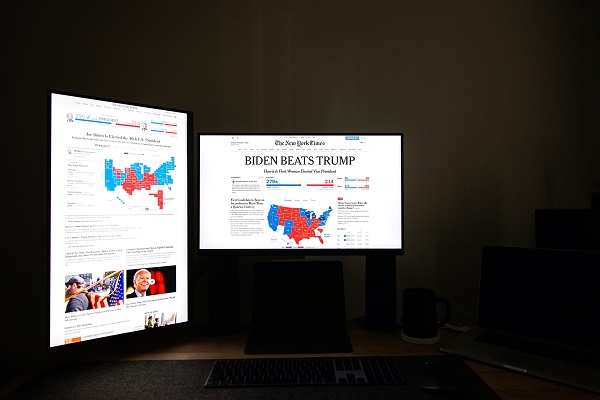About memy stats
Information About me
Hello I am Bangldeshi, generally our country is an Agricultural country.
But IT is the favorite job in our country. And I am enjoy this Profession.
So I am working at Police Headquarters
as a Senior Programmer since 5 years. At Present lot of experience
about any type of IT Project and also I can Virtual Machine create
and host with Project live for public.
25+
Projects
Completed
5+
Years of
experience
20+
Happy
Clients
23+
Customer
reviews
My Skills
My Timeline
2023 - present
AWS Cloud computing - SEIP
This Course Provide me Amzon Cloud Services.
February 2019 - present
Senior Programmer - PeopleNtech
This is my post-internship job after completing my course.
2018 - January 2019
Laravel Course - High Tech Park Authority
This course provide me how to creat a website by PHP fremwark.
24 Ferbuary 2018 - 15 September 2019
Professional Web Devlopment Specialist - Basis Institute of Technology and Management
This course Provide me how to create a template design and dynamic behavior and how to connect with PHP, mysql database.
2012 - 2017
Marketing Officer - SMG Animal Health Company Limited.
This job give me lot experience but this type of job have targeted stress so I haven't continue.
2008 - 2011
Finance - National University of Bangladesh.
Though I have completed graduation in Finance but always engage with programming sector.
01 March 2008 - 31 March 2009
Microsoft Office and Graphic Design - Optimum Education and Fundation.
This is my first course to go IT sector, This course Provide me full Office and Graphic Design.
My PortfolioMy Work
Here is some of my work that I've done in various programming languages.
My BlogsMy Blogs

How to Create Your Own Website
I have created website with HTML, CSS, Bootstrap, Javascript and Laravel. And this website connect with MysQL, which can do content create, update, read and delete.

How to Become an Expert in Web Design
Becoming an expert in web design requires a combination of education, practice, creativity, and staying up-to-date with the latest design trends and technologies. Here's a step-by-step guide to help you become an expert in web design: 1. Learn the Basics: - Start with the fundamentals of web design, including HTML, CSS, and JavaScript. These are the building blocks of web development and design. - Familiarize yourself with web design principles, such as layout, typography, color theory, and user experience (UX) design. 2. Formal Education: - Consider enrolling in a formal web design program at a college or university, or take online courses and tutorials from reputable platforms like Coursera, Udemy, or Codecademy. 3. Build a Portfolio: - Create a personal website or portfolio showcasing your design work. This will be crucial for demonstrating your skills to potential clients or employers. 4. Practice Regularly: - Practice designing websites and web applications regularly. The more you design, the better you'll become. - Experiment with various design projects, including personal projects and mock-ups to build your skills. 5. Study Design Principles: - Stay up-to-date with design principles and trends by reading books, blogs, and attending web design conferences or workshops. - Familiarize yourself with responsive design, mobile-first design, and accessibility standards to create inclusive and user-friendly designs. 6. User Experience (UX) Design: - Understand the importance of UX design and how it affects the overall user satisfaction. Study user research, wireframing, and usability testing. 7. Web Development Skills: - Learn front-end web development skills to understand how your designs will be implemented on the web. Knowledge of HTML, CSS, and JavaScript is crucial. 8. Tools and Software: - Master design tools such as Adobe Creative Suite (Photoshop, Illustrator, XD), Figma, Sketch, or other web design software. - Stay updated with the latest design tools and software to enhance your productivity. 9. Specialize: - Consider specializing in a specific area of web design, such as e-commerce, mobile app design, or interactive web design. Specialization can make you stand out as an expert in a particular field. 10. Seek Feedback: - Don't hesitate to seek feedback on your work from peers, mentors, or online communities. Constructive criticism can help you improve your skills. 11. Work on Real Projects: - Gain practical experience by working on real projects, either as a freelancer or through internships. Real-world projects will expose you to various challenges and help you learn faster. 12. Network: - Join web design communities and networks both online and locally to connect with other designers, share knowledge, and stay informed about industry developments. 13. Keep Learning: - Web design is an ever-evolving field. Stay current with emerging technologies, design trends, and best practices. 14. Certifications: - Consider earning relevant certifications in web design and development to showcase your expertise and enhance your credibility. 15. Teach Others: - Teaching others what you've learned can reinforce your knowledge and help you become an authority in your field. Becoming an expert in web design is a journey that requires dedication and continuous learning. As you gain experience and build a strong portfolio, your reputation as a web design expert will grow, opening up opportunities for exciting projects and career advancement.

Become a Web Designer in 10 Days
Becoming a web designer in just 10 days is an ambitious goal, and it's important to note that true expertise in web design typically takes a longer period of learning and practice. However, if you're looking to quickly acquire some foundational skills and create a basic website, here's a condensed 10-day plan to get you started: Day 1-2: Understand the Basics Spend the first two days familiarizing yourself with the basics of web design and development. Learn what HTML and CSS are and how they work together to create web pages. You can find beginner-friendly tutorials and courses on platforms like Codecademy or W3Schools. Day 3-4: Learn HTML Focus on learning HTML (HyperText Markup Language). HTML is the backbone of web design and is used to structure the content of a webpage. Create simple HTML pages with text, headings, paragraphs, links, and images. Day 5-6: Learn CSS Move on to learning CSS (Cascading Style Sheets). CSS is used to control the presentation and layout of web pages. Experiment with adding styles, such as colors, fonts, and basic page layout to your HTML pages. Day 7-8: Responsive Web Design Learn about responsive web design, which ensures your websites look good on various devices and screen sizes. Study CSS media queries to make your designs responsive. Try building a basic responsive webpage. Day 9: Design Principles Study the basics of design principles, including typography, color theory, and layout. Explore design concepts such as alignment, contrast, and hierarchy. Day 10: Create Your Website Apply what you've learned to create a simple, one-page website. Use your HTML and CSS skills to design a basic homepage. Make sure your website is responsive, meaning it should adapt to different screen sizes. While this 10-day plan can give you a basic introduction to web design, it's important to remember that web design is a vast field with a lot to explore. To become an expert, you will need to continue learning, practicing, and gaining real-world experience. Consider taking longer courses, reading books, participating in web design communities, and working on a variety of projects to advance your skills. Remember that becoming a web design expert is a long-term commitment that involves ongoing learning and improvement. You can use this 10-day plan as a starting point to build a foundation, but expertise will come with time and effort.

Debbuging made easy with Web Inspector
Web Inspector is a powerful development tool primarily used for debugging web applications in web browsers like Google Chrome, Mozilla Firefox, Safari, and Microsoft Edge. It helps developers identify and resolve issues in their web applications, which can include problems related to HTML, CSS, JavaScript, network requests, and performance. Here are some ways in which Web Inspector makes debugging easier: 1. **Code Inspection**: Web Inspector allows you to inspect and modify the HTML, CSS, and JavaScript of a web page. You can view the DOM (Document Object Model), analyze CSS styles, and inspect and edit JavaScript code in real-time. 2. **Console**: The console in Web Inspector provides a place for you to log messages, errors, and execute JavaScript commands. You can use this feature to understand what's happening in your code, identify errors, and test scripts in real-time. 3. **Debugger**: The JavaScript debugger is a crucial feature in Web Inspector. It allows you to set breakpoints, step through code, and watch variables to understand the flow of your code and find the source of errors. 4. **Network Monitoring**: You can monitor network requests, view request and response headers, and inspect the content of network requests. This is essential for debugging issues related to AJAX requests, APIs, and data retrieval. 5. **Performance Analysis**: Web Inspector provides performance profiling tools that help you identify bottlenecks in your web application. You can record performance data, analyze CPU and memory usage, and optimize your code for better performance. 6. **Resource Tracking**: You can inspect and monitor resources such as scripts, stylesheets, images, and other assets to ensure they are loading correctly and efficiently. 7. **DOM Exploration**: You can interact with the DOM tree, view element properties, and make real-time changes to the structure and content of a web page. 8. **Mobile Debugging**: Web Inspector can be used for mobile web development by connecting your mobile device to your development machine. This allows you to debug web applications on mobile browsers. 9. **Security Analysis**: You can use Web Inspector to inspect security-related issues in your web application, such as mixed content warnings and security headers. 10. **Application Auditing**: It provides auditing tools to help you find and fix common web application issues, including accessibility, performance, and best practices. 11. **Source Maps**: Web Inspector works seamlessly with source maps, which allow you to debug minified or transpiled code, making the debugging process easier for modern web development workflows. In summary, Web Inspector is a comprehensive tool that simplifies the process of debugging web applications by providing real-time insight into your code, network activity, and performance. It's an invaluable resource for web developers looking to identify and resolve issues in their projects.

Get started with Web Design and UI Design
Getting started with web design and UI (User Interface) design is an exciting journey that allows you to create visually appealing and user-friendly digital experiences. Here's a step-by-step guide to help you get started: 1. **Understand the Basics:** - Begin by understanding the fundamentals of web design and UI design. These two fields are closely related, but they have some key differences. Web design encompasses the entire website, while UI design focuses on the user interface within the website or application. 2. **Learn the Fundamentals:** - Study design principles, including layout, color theory, typography, and visual hierarchy. Websites like Canva, Skillshare, and Coursera offer courses and tutorials on these topics. 3. **Tools of the Trade:** - Familiarize yourself with design software like Adobe XD, Figma, Sketch, or Adobe Photoshop. These tools are essential for creating mockups and prototypes. 4. **Study Existing Designs:** - Analyze and deconstruct existing websites and applications to understand what makes them visually appealing and user-friendly. Pay attention to navigation, buttons, forms, and overall layout. 5. **User-Centered Design:** - Learn about user-centered design principles. Understand your target audience, conduct user research, and create personas to help inform your design decisions. 6. **Wireframing and Prototyping:** - Start with wireframing to create a basic, low-fidelity layout of your design. Then, move on to prototyping to create interactive mockups. Tools like Figma and Adobe XD are excellent for this. 7. **Typography and Color:** - Choose appropriate fonts and color palettes that match the mood and purpose of your design. Keep accessibility in mind to ensure your design is usable by everyone. 8. **Responsive Design:** - Learn about responsive web design, which ensures your design adapts to different screen sizes and devices. CSS frameworks like Bootstrap and Foundation can be helpful. 9. **HTML and CSS:** - While not mandatory for a UI designer, having a basic understanding of HTML and CSS can be beneficial. This will allow you to understand the constraints and possibilities of web development. 10. **Feedback and Iteration:** - Share your designs with peers and seek feedback. Iterate on your designs to improve them. User testing can be extremely valuable in this phase. 11. **Stay Updated:** - Web and UI design trends evolve rapidly. Follow design blogs, forums, and social media accounts to stay updated with the latest trends and best practices. 12. **Build a Portfolio:** - Create a portfolio showcasing your best work. This will be crucial when applying for jobs or freelance opportunities. 13. **Networking:** - Attend design meetups, conferences, and join online communities. Networking can lead to job opportunities and valuable insights. 14. **Start Small:** - If you're new to design, start with small personal projects to gain experience and confidence. As you become more skilled, you can take on more significant projects. 15. **Take Online Courses:** - Consider enrolling in online courses specifically focused on web and UI design. There are many free and paid courses available on platforms like Coursera, Udemy, and LinkedIn Learning. Remember that web design and UI design are skills that develop over time with practice. Don't be discouraged by initial challenges, and keep learning and improving your skills. Good luck on your web and UI design journey!

This is what you need to know about Web Design
Web design is a multifaceted field that involves creating and maintaining websites on the internet. It encompasses various aspects, including aesthetics, user experience, functionality, and technical considerations. Here's what you need to know about web design: 1. **User-Centered Design:** The primary focus of web design is to create a website that caters to the needs and preferences of the users. User-centered design involves understanding your target audience and designing the site to provide them with a positive experience. 2. **Responsive Design:** With the proliferation of mobile devices, it's crucial to design websites that adapt to different screen sizes and resolutions. Responsive web design ensures that your site looks and functions well on various devices, such as smartphones, tablets, and desktops. 3. **Visual Design:** The visual elements of a website, such as color schemes, typography, images, and layout, play a significant role in creating an appealing and consistent design. Design principles like balance, contrast, and alignment are essential. 4. **Navigation:** An intuitive and user-friendly navigation system is essential for guiding visitors through your website. Clear menus, breadcrumbs, and a logical page structure help users find the information they seek. 5. **Content Strategy:** Creating high-quality, relevant, and engaging content is key to attracting and retaining visitors. Content should be well-organized, easy to read, and optimized for search engines (SEO). 6. **Performance Optimization:** Websites need to load quickly to retain visitors and improve search engine rankings. This involves optimizing images, minimizing code, and using Content Delivery Networks (CDNs) to reduce latency. 7. **Accessibility:** Designing websites with accessibility in mind ensures that people with disabilities can access and interact with your content. This includes providing alternative text for images, using semantic HTML, and testing with assistive technologies. 8. **Security:** Web designers should be aware of common security issues and best practices to protect the website and its users. This includes using secure protocols (HTTPS), keeping software up to date, and implementing measures to prevent attacks like SQL injection and cross-site scripting (XSS). 9. **Cross-Browser Compatibility:** Websites should function correctly on various web browsers (e.g., Chrome, Firefox, Safari, Internet Explorer). Testing and optimizing for compatibility is essential to reach a broader audience. 10. **E-commerce Considerations:** If your website involves online transactions, you'll need to implement secure payment gateways and provide a seamless shopping experience. 11. **Mobile Apps vs. Responsive Websites:** Depending on your project's requirements, you might need to decide between developing a mobile app and creating a responsive website. Each has its advantages and limitations. 12. **Web Design Tools:** Familiarize yourself with web design tools and technologies such as HTML, CSS, JavaScript, and design software like Adobe Photoshop, Sketch, or Figma. 13. **Collaboration:** Effective communication and collaboration with developers, content creators, and clients are crucial for a successful web design project. 14. **Continuous Learning:** Web design is an ever-evolving field, with new design trends, technologies, and best practices emerging regularly. Staying up-to-date is essential for success. 15. **Testing and User Feedback:** Regularly testing your website and gathering user feedback is essential for identifying and addressing issues and improving the user experience. Web design is both an art and a science, and it requires a balance between creativity and technical skills. Successful web designers stay adaptable, responsive to changing trends, and focused on creating user-friendly, visually appealing, and functional websites.
Contact MeContact
Contact me here
If you want to contact me then follow the below links. I believe that, I can fulfill your expectations. with my knowledge.
: Dhaka, Bangladesh
: shakowat1987@gmail.com
: Model Institute of Science & Technology
: +88-01721417496
: Bangla, English, German




